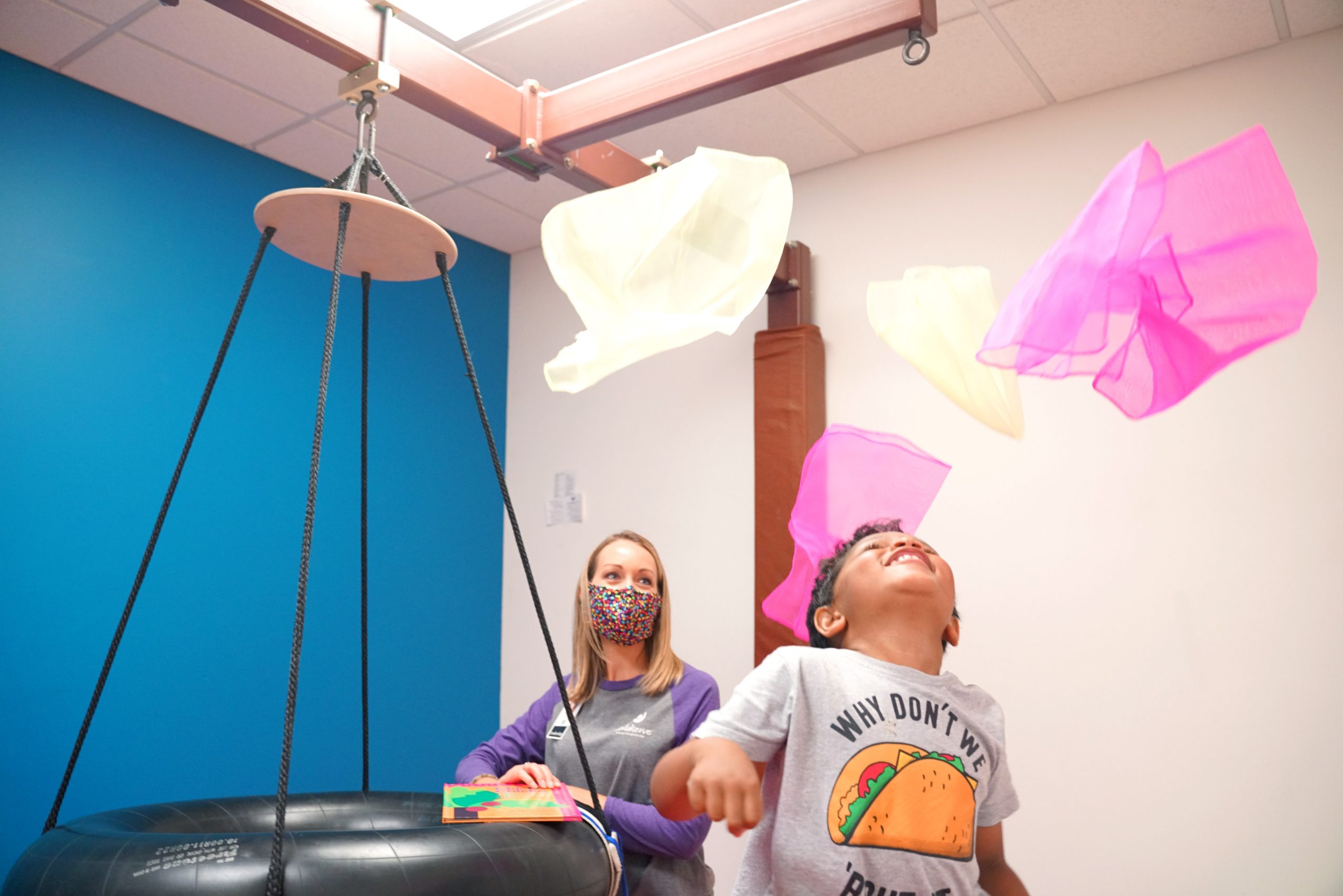
Listening calmly during a story can be hard. For children that have trouble with sensory processing or who struggle to be engaged by traditional questions, sitting still and paying attention can be especially challenging. These kids are still able to listen to stories, they just need some extra help. That’s where sensory story time comes in!
What is Sensory Story Time?
Sensory story time is a more interactive approach to reading a book with a child. Instead of sitting with a child to read a book together, parents and teachers build in activities that allow for movement and sensory input. This approach to story time helps children with sensory concerns, as well as those who have trouble sitting still, focusing, and staying quiet.
Sensory story time involves thinking about the entire child and their ability to participate in shared reading. You can use colorful dots, carpet squares, hula hoops and swings to help the child see where their body can be while listening to the story. During the story, children can use fidgets to keep their hands busy. If that’s not enough, they can stand up or walk around. Containers with cotton balls, colorful scarves, beans, water beads, sand, rice, water and more can be used for various stories to talk about elements of the story – I’ll show you below!
Sensory Story Time at Home
One of my favorite stories to use for sensory story time is “We’re Going on a Bear Hunt” by Michael Rosen. A child can engage in this story with physical actions such as standing up and doing the actions together with the reader (swim, tip toe, run). Having buckets with water, grass, snow, sticks and mud for the child to interact with during the story can engage their senses to increase their understanding of the adventure. Engage the child’s imagination by holding onto a soft teddy bear while reading the story or hiding the bear around the room to go hunting for it. Additionally, a weighted blanket to hide under at the end of the story is a great way to give the child a sense of security. Sensory story time can be as creative and imaginative as the reader and child want it to be!
Some other stories that are great for sensory story time include:
- “Chicka Chicka Boom Boom” by Bill Martin Jr. and John Archambault
- “The Very Hungry Caterpillar” by Eric Carle
- “Dear Zoo” by Rod Campbell
- “Brown Bear, Brown Bear, What Do You See?” by Bill Martin, Jr.
- “What Makes a Rainbow” by Betty Schwartz
- “Pete the Cat: I Love My White Shoes” by Eric Litwin and James Dean
Continued below.

Breaking It Down
If you are interested in doing sensory story time with a child you know, here are some steps to help you get started:
- Choose a book you know the child enjoys listening to, looking at, or reading with you. Books should take no more than 5-10 minutes to read based on the child’s attention span.
- Create sensory containers to represent parts of the story or fill containers with noodles, beans, or rice and hide objects representing the story in the containers for the child to dig out.
- Clearly define a place you would like the child’s body during the story. Hula hoops, pillows, carpet squares, exercise balls, or other flexible seating options allow the child room to wiggle. Remember, it’s OK if the child stands or walks around while listening to the story.
- Offer the child a fidget to hold in their hands if they need to stay busy.
- Read the story with the child and enjoy the fun of sensory containers after the story. Don’t be afraid to read the story again after the sensory story time!
About
ChildServe improves the health and well-being of nearly 5,800 children each year through specialized clinical, home, and community-based programs and services. We serve children with developmental delays, disabilities, injuries, and other special healthcare needs.
Follow Us
Contact Us
Johnston | 515-727-8750
Ames | 515-232-7220
Des Moines | 515-280-5332
Iowa City | 319-351-5437
Cedar Rapids | 319-777-7450
Links
